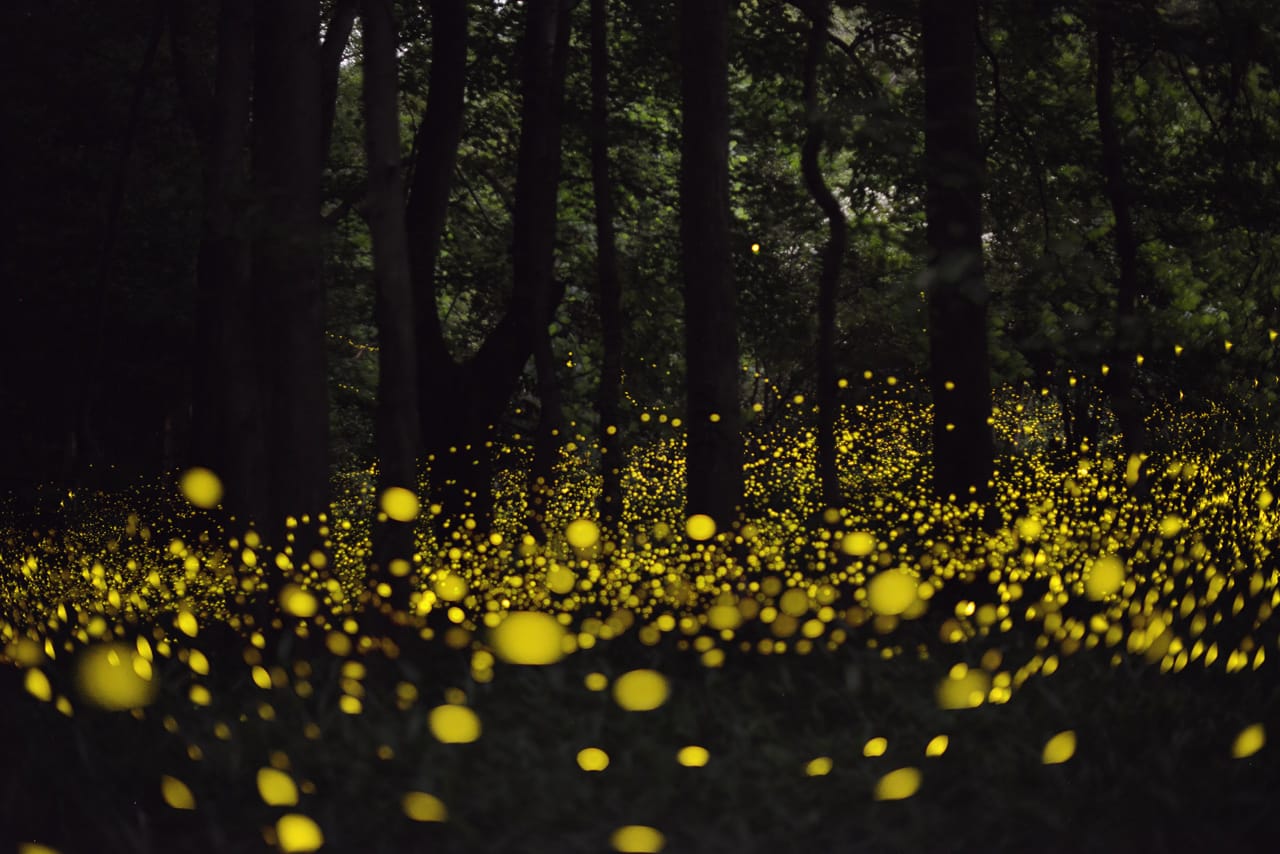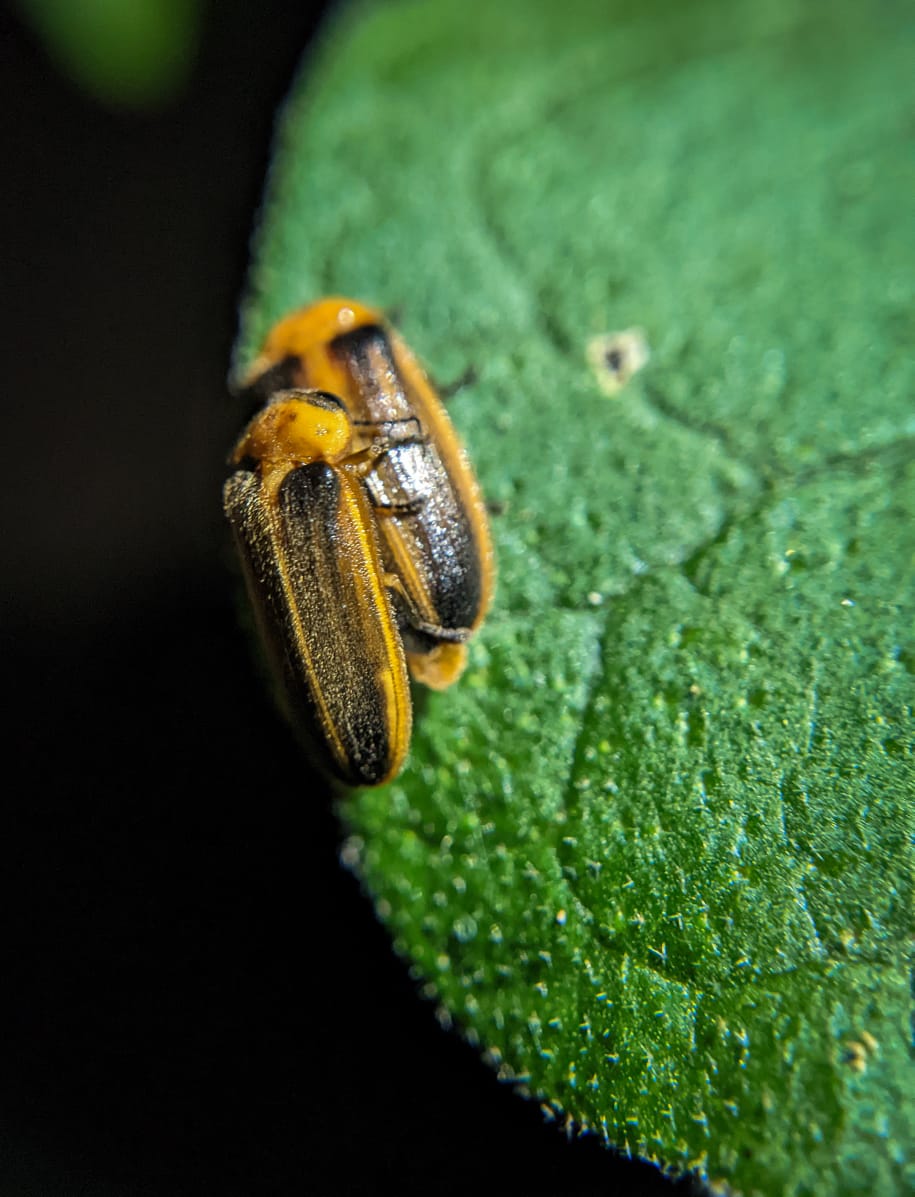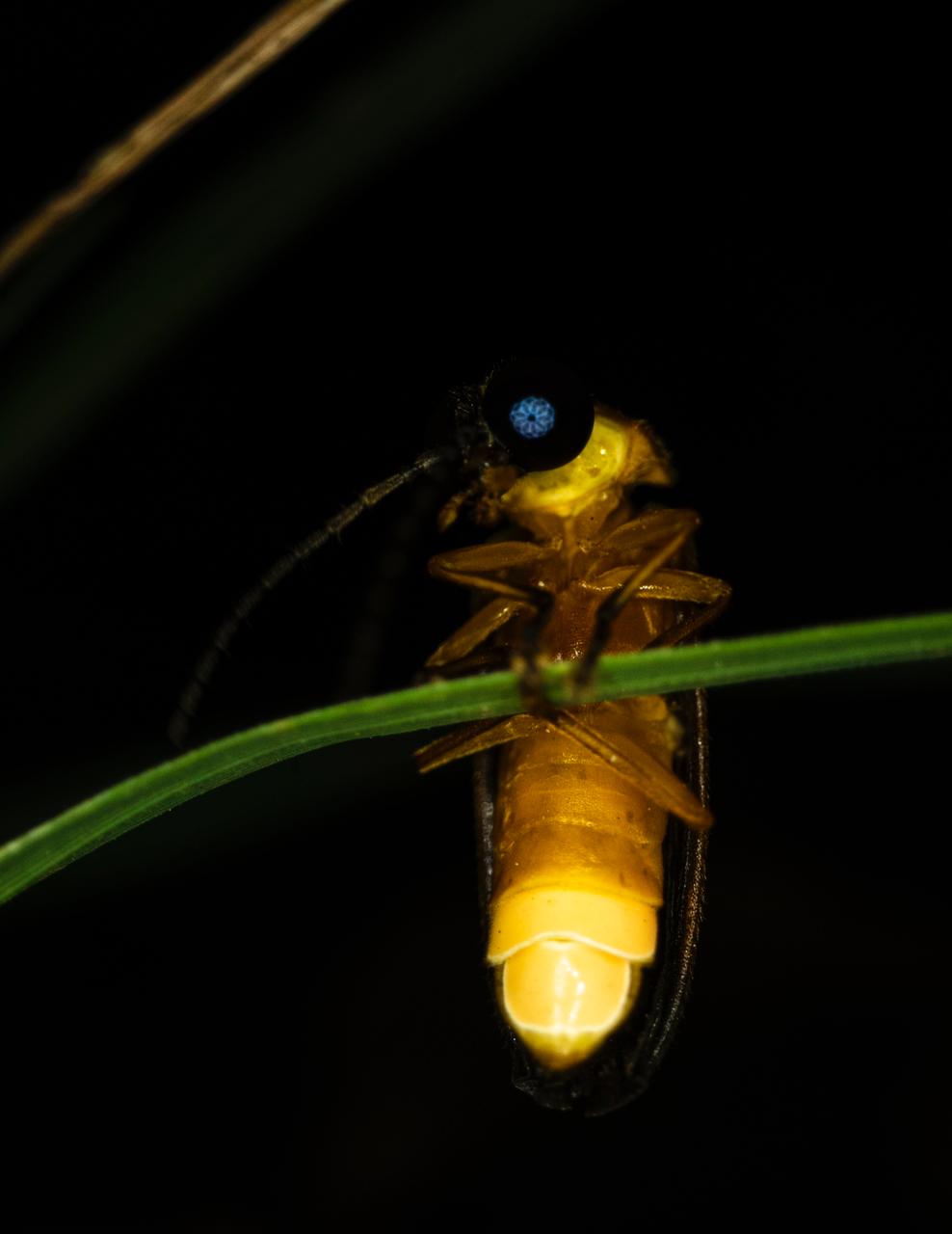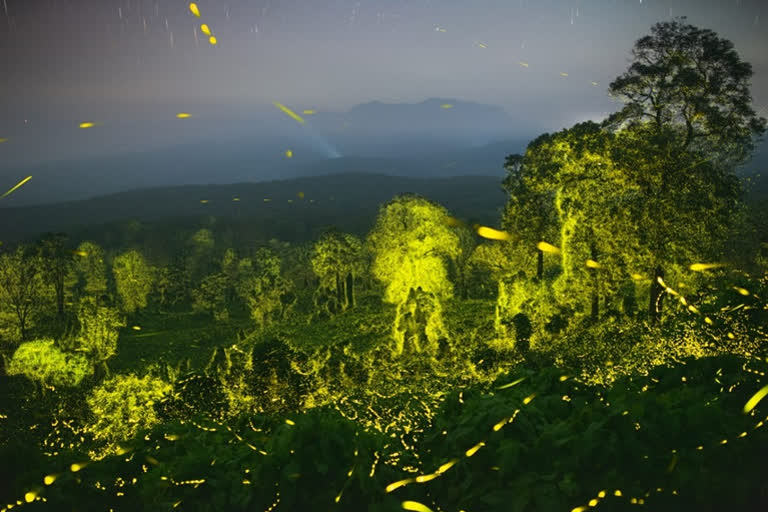Chennai (Tamil Nadu): Pandora - the bioluminescent world in 'Avatar' movie though is fictional, a rare phenomenon has turned this into a reality in Anamalai Tiger Reserve. In summer every year, thousands of fireflies synchronously flash at night and turn this pristine forest reserve into a lush green carpet.
In April 2022, under the direction of Field Director Ramasubramanian (IFS), Deputy Director MG Ganesan along with Sriram Murali, a Software engineer and an expert in light pollution went to ATR to observe the synchronized flashing of a large congregation of fireflies. What they witnessed there was mind-boggling and they contend this to be an eighth-world wonder.

Thousands of fireflies were seen coordinating their flashes across the forest. The flashes were seen emerging from one tree and soon spreading across the forest, thereby creating an effect as if it was the trees which were pulsating these flashes. Each tree seemed to have a different flashing pattern and the entire forest seemed to be glowing in yellowish-green. Actually, these flashes are caused by male fireflies who perch on trees to put on these light shows for finding a potential mate. The forest might have an equal number of females who may not even flash and possibly be wingless., say the experts.

Read: Watch: Beautiful Butterfly Park kickstarts at Jim Corbett National Park
Spending most of their life as larvae, they feed on soft-bodied insects. Adults only live for a few weeks and eat nectar and pollen. Fireflies have dedicated light organs that are located under their abdomens which take in oxygen. Inside these special cells, the oxygen combines with a substance called luciferin to produce light. Hence firefly's light is 100% efficient and produces no waste. Lack of lights, night tourism, dam constructions, habitation, and vehicle movement aid the large population of the fireflies. Such a large congregation shows how healthy the ecosystem is.

There are over 2,000 species of fireflies, but only a handful are synchronous. Scientists say the fireflies found in ATR are of the Abscondita genus and maybe a new species. Although, detailed research and DNA sequencing are required to properly identify the species. For now, it is noted that they are brownish with black stripes. They have round eyes with intricate patterns and are less than a centimetre long.
In India, these synchronous fireflies are also found in some places in Maharashtra besides Parambikulam and Nelliampathi. Now, under the leadership of the Field Director Ramasubramanian (IFS), Deputy Director MG Ganesan, forest officials, scientists and conservationists are working towards understanding the ecology and life cycle of these fireflies, their selection of trees, and their relationship to other wildlife.
This unique phenomenon in ATR is a result of decades of conservation work by several passionate officials that have toiled to protect the Anamalai Tiger Reserve. It may be noted that firefly populations are on the decline across the world and this extremely rare celestial wonder should be protected for our future generations.



